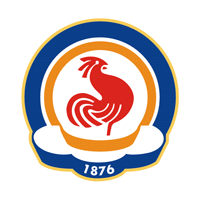

ARUBA LOCATION
The island of Aruba is part of the West Indies in the Caribbean Sea, and lies about 12 degrees north of the equator, approximately 29km (18 miles) off the Paraguaná Peninsula of Venezuela. One of the Lesser Antilles islands, Aruba is about 30 km (19 miles) long and
about 8 km (5 miles) wide with an area of 193 sq km (75 sq miles). The island's population is about 89,000. The capital is Oranjestad named after the Dutch House of Orange.
Antilles is the term used for the whole of the West Indies except the Bahama Islands. Cuba, Jamaica, Haiti, the Dominican Republic, and Puerto Rico form the Greater Antilles. The Lesser Antilles, extending in an arc from Puerto Rico to the northeastern coast of South America, include the Virgin Islands, Windward Islands, Leeward Islands, southern group of the Netherlands Antilles (including Aruba), and, usually, Barbados and Trinidad and Tobago.
The Netherlands Antilles are an integral part of the Netherlands, comprising two island groups of three islands each, the Netherlands Leeward Islands and the Netherlands Windward islands, in the Caribbean Sea.
The former group, consisting of Curaçao, Bonaire, and until 1986 Aruba, is situated northwest of Caracas, Venezuela. The area of the Netherlands Leeward Islands is 925 sq km (357 sq mi).
The Netherlands Windward Islands consist of the southern half of Saint Martin (Sint Maarten) and all of Saint Eustatius and Saba, covering a total area of about 67 sq km (about 26 sq miles). These islands are situated at the northern end of the Lesser Antilles chain, to the southeast of Puerto Rico.
The Caribbean Sea is partially enclosed on the north and east by the islands of the West Indies, and bounded on the south by South America and Panama, and on the west by Central America. Its name is derived from the Carib people, who inhabited the area when Spanish explorers arrived there in the 1400s.
Practically the entire Caribbean Basin is more than 1830 m (6000 ft) deep. Large areas of the sea exceed 3660 m (12,000 ft) in depth; the greatest depth measured thus far is Cayman Trench (7535 m/24,720 ft) between Jamaica and Cayman Islands. Navigation is open and clear, making the Caribbean a major trade route for Latin American countries. A popular resort area, the Caribbean Sea is noted for its mild tropical climate.


ARUBA HISTORY
Alonzo de Ojeda discovered Aruba in 1499, claiming the island for Spain. However, the Spaniards did not consider the island worth colonizing and left the original Arawak Indian inhabitants to live in virtual peace. The Spaniards’ lack of interest resulted in the island becoming a haven for pirates and buccaneers. Spanish hegemony continued unchallenged, however, until 1634, by which time the war with Holland was well into its seventh decade. Dutch war interests then switched to the Caribbean and the Dutch fleet took over the neglected territory with little opposition. In 1643, the Dutch appointed
a governor to take charge of Aruba and the rest of the Netherlands Antilles. Except for a brief period in the early 19th century, when the British took possession, Aruba has remained under peaceful Dutch jurisdiction ever since.
On 1 January 1986, Aruba achieved internal autonomy, separating it administratively from the rest of the Netherlands Antilles, although it remains an integral part of the Kingdom of the Netherlands. This was originally conceived as the first step towards independence, for which a 10-year transitional period was planned. In March 1994, however, after consultation with the Dutch government, this plan was shelved. Independence at some later date has not been completely ruled out but it will now require the consent of two-thirds of the population in a referendum.
The reluctance to move towards independence seems to have come from the Arubans themselves, especially the leading political party, the Arubaanse Volkspartij (AVP). The AVP, under the leadership of Jan Hendrik Eman, won both two successive elections in 1993 and 1997, although suffered a heavy defeat at the hands of its major rival the center-left Movimiento Electoral di Pueblo (MEP) at the most recent poll in September 2001. Nelson Oduber took over as Premier.









Hiç yorum yok:
Yorum Gönder